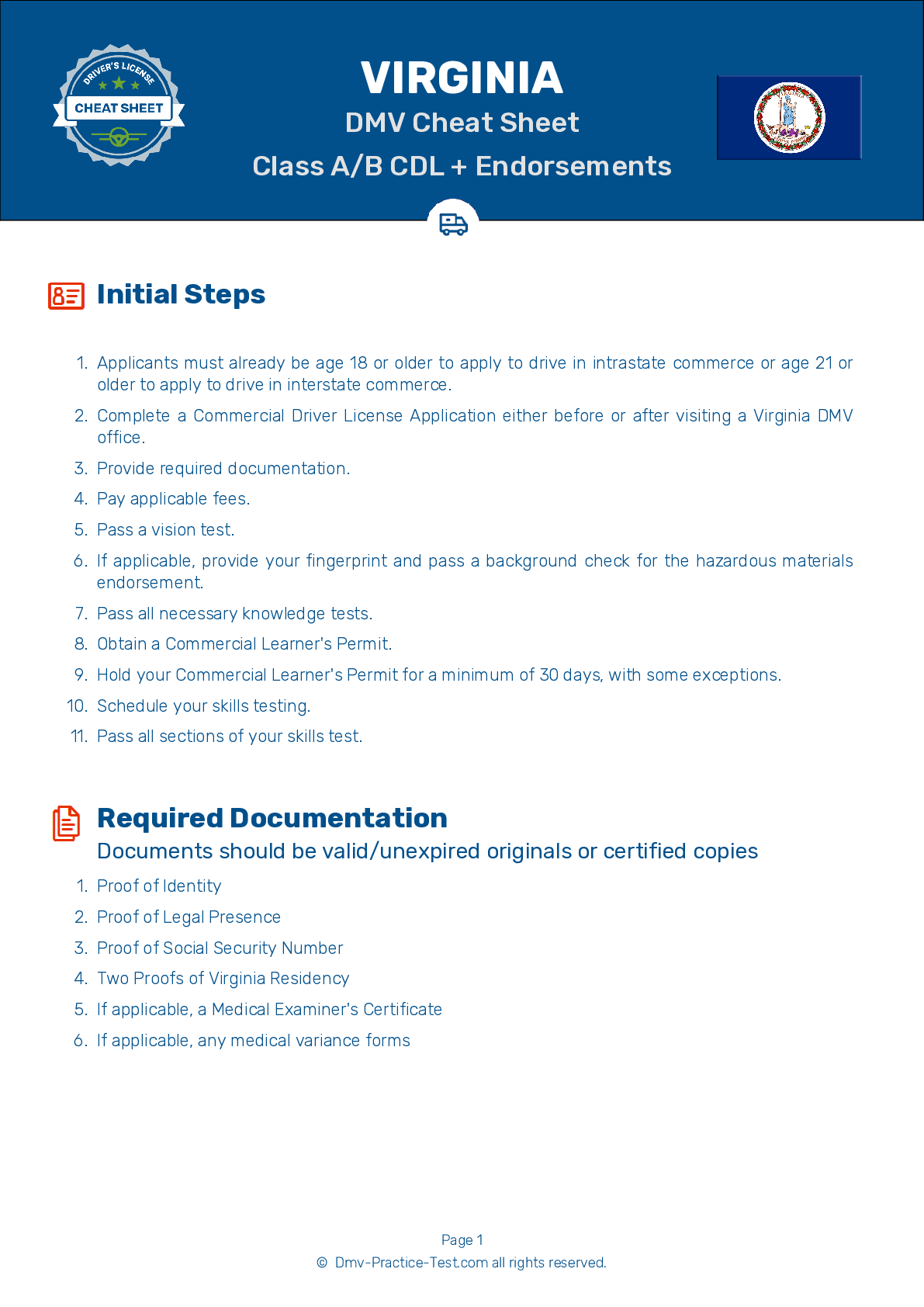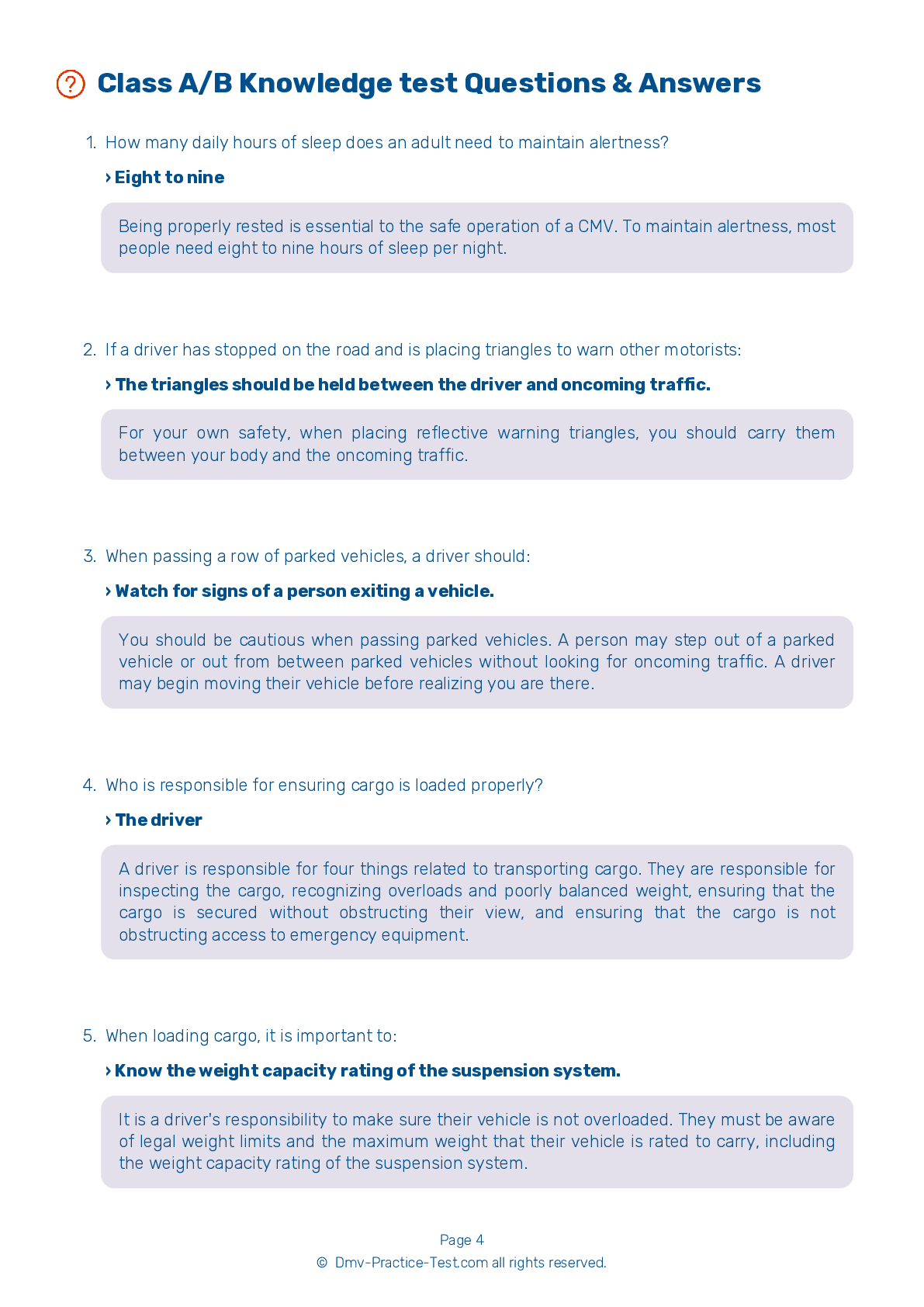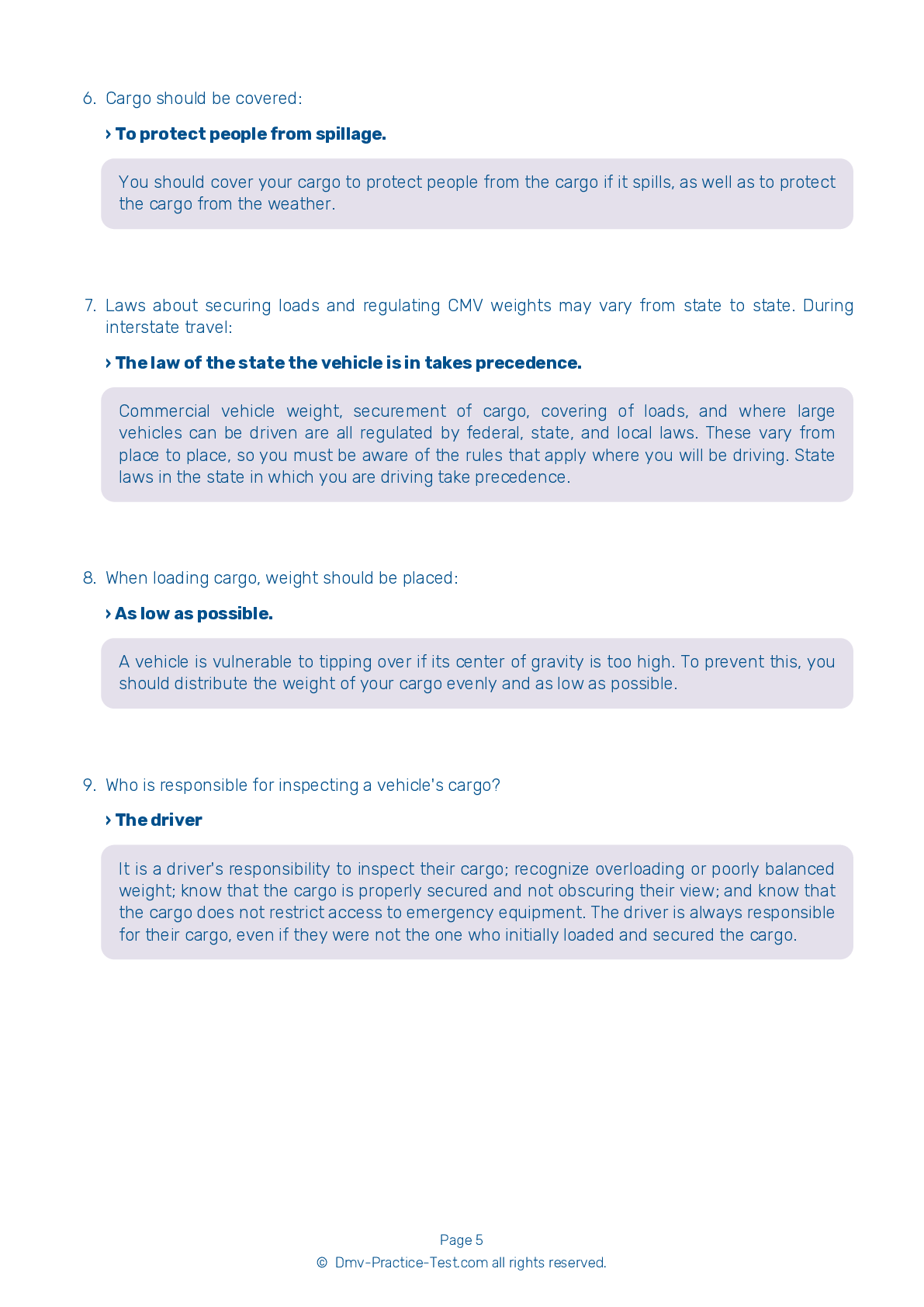Double #2
Double Triple Test | Virginia 2025 #2 Page 3 of 3
Train for FREE with our Virginia CDL double triple practice test online. The official exam test consists of several obligatory parts, with all of them checking your knowledge of different blocks of road rules. If you need to obtain a VA CDL double triple license in 2025, practice as much as possible. Free sample tests published on our website will help you check and improve your knowledge and boost your grades. Please bear in mind that DMV requirements may vary from state to state.
20
16
20
15 . If planning to back a vehicle where there may be overhanging objects, a driver should:
Because you can't see everything behind you, driving in reverse is always dangerous and should be done only when necessary. Before backing into an area, you should exit your vehicle and inspect the path of travel to check for potential hazards, especially overhanging objects that would otherwise be difficult to spot in a mirror.
16 . If a vehicle is equipped with a retarder and the vehicle's drive wheels have poor traction:
When a vehicle's drive wheels have poor traction, the use of a retarder may cause them to skid. A retarder should be turned off when a vehicle is being driven under wet, icy, or snowy conditions.
17 . Signs indicating the height of a bridge or overpass are:
Do not assume that posted height clearances are accurate. If the road was repaved after the sign was posted, or if there is packed snow on the ground, the actual height of the opening may be different than what is indicated. If you are not confident that your vehicle will be able to safely clear an upcoming bridge or overpass, you should slow down and find another path, if possible.
18 . If a vehicle is carrying hazardous cargo, placards must be placed:
Placards must be placed on the front, the rear, and both sides of a vehicle carrying hazardous cargo. They must be readable from any direction.
19 . A turn signal should be used well in advance of a turn:
It is important to signal well in advance of a turn. This way, other drivers will be less likely to try to pass your vehicle in a manner that would impeded the safe completion of the turn.
20 . What tells you how much pressure is in your vehicle's air tanks?
A vehicle that is equipped with air brakes must also be equipped with a supply pressure gauge. This gauge tells the driver how much air pressure is in each of the vehicle's air tanks.
2025 Virginia | Frequently Asked Questions
In Virginia, a Commercial Driver's License (CDL) Class A is defined as a license that allows the holder to operate any combination of vehicles with a Gross Combination Weight Rating (GCWR) of 26,001 lbs or more, provided the Gross Vehicle Weight Rating (GVWR) of the vehicle(s) being towed is over 10,000 lbs. It includes tractor-trailers, truck and trailer combinations.
A Class A CDL license in Virginia allows holders to operate vehicles such as tractor-trailers, truck and trailer combinations, tank vehicles, livestock carriers, and flatbeds. The vehicles can have a Gross Combination Weight Rating (GCWR) of 26,001 lbs or more, provided the towed vehicle(s) have a Gross Vehicle Weight Rating (GVWR) over 10,000 lbs.
To obtain a Class A CDL license in Virginia, you must be at least 18 years old (21 for interstate driving), have a valid Virginia driver's license, pass a vision test, and complete a self-certification process. You'll also need to pass knowledge and skills tests, including general knowledge, combination vehicle, and air brakes tests. Medical examinations may also be required.
In Virginia, to qualify for a Class A Commercial Driver's License (CDL), you must be at least 21 years old. This age requirement is set to ensure that drivers have the maturity and experience needed to handle large commercial vehicles on both intrastate and interstate highways.
In Virginia, specific endorsements are not required for a Class A CDL license, but they can broaden your driving capabilities. Endorsements such as Hazmat (H), Tank (N), Passenger (P), and School Bus (S) may be added after passing additional written and skills tests. These allow you to transport hazardous materials, drive tank vehicles, passenger vehicles, and school buses respectively.
The Class A CDL skills test in Virginia encompasses three parts: a pre-trip vehicle inspection, a basic vehicle control test, and an on-road driving test. The pre-trip inspection assesses your ability to inspect your vehicle before driving. The basic control test evaluates your ability to maneuver and control the vehicle. The on-road test assesses your ability to safely operate the vehicle in various traffic situations.
Yes, Class A CDL license holders may face limitations based on their specific endorsements or lack thereof. For instance, without a Hazardous Materials endorsement, they cannot transport hazardous materials. Additionally, restrictions can be placed on a CDL due to the driver's physical condition, such as needing corrective lenses or an automatic transmission restriction.
Yes, it is possible to take the written Class A CDL test in languages other than English in Virginia. The Virginia Department of Motor Vehicles (DMV) offers the test in various languages. However, federal regulations require that all CDL applicants demonstrate proficiency in English to ensure safety on the roads.
Yes, accommodations can be requested for the Class A CDL written test in Virginia if you have a disability. These may include accessible facilities, extra time, or other necessary adjustments. It's recommended to contact the Virginia Department of Motor Vehicles (DMV) in advance to discuss your needs and ensure appropriate accommodations can be provided.
Yes, you can retake the Class A CDL written test in Virginia if you don't pass on your first attempt. You must wait at least 15 days before retaking the test. There's no limit to how many times you can retake the test, but each attempt will require a new testing fee.



